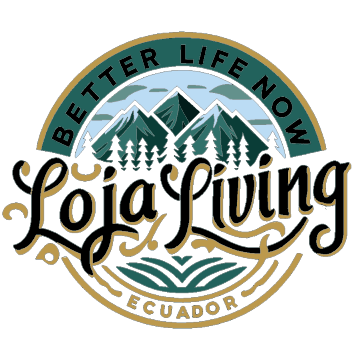the Economy in the USA and Its Impact For Retirees
The economic landscape in the United States has transformed significantly over the decades, affecting how retirees plan for and experience their golden years. The current economic conditions in the US present a mix of opportunities and challenges for those approaching retirement. By examining the evolution of American retirement from the 1950s to today and comparing it with the experience of retirees in Ecuador, we can gain valuable insights into how the state of the economy impacts retirees.
In the 1950s, the post-World War II era brought economic prosperity that significantly benefited retirees. This period is often regarded as the golden age of retirement in America. Defined benefit pension plans were common, providing a guaranteed income for life. These pensions, combined with robust Social Security benefits, created a stable financial foundation for many retirees. Social Security, established in the 1930s, had matured and offered substantial support, reducing the financial anxiety associated with retirement. Additionally, healthcare costs were relatively low compared to today’s standards, further easing the financial burden on retirees. The overall cost of living was also lower, allowing households to comfortably retire on pensions and Social Security benefits. This combination of factors meant that many retirees in the 1950s enjoyed financial security and a high quality of life.
The 1980s marked a significant transition period with new challenges for American retirees. This decade saw a shift from defined benefit plans to defined contribution plans, such as 401(k)s, transferring the risk of investment performance from employers to employees. This shift meant that individuals had to become more active in managing their retirement savings. Social Security faced financial pressures, leading to reforms such as increasing the retirement age, which impacted future retirees. The late 1970s and early 1980s experienced high inflation, which eroded the purchasing power of fixed incomes, adding another layer of complexity to retirement planning. Additionally, the early 1980s saw economic recessions that affected retirement savings and job security. Healthcare costs began to rise during this period, placing more financial strain on retirees. Despite these challenges, many retirees in the 1980s could still maintain a comfortable lifestyle, especially those who had saved adequately and adapted to the new retirement planning landscape.
Moving into the early 2000s, retirees faced a mixed set of prospects. The dot-com bubble burst and subsequent market downturns affected retirement savings, particularly for those heavily invested in equities. The housing market boom provided wealth for homeowners, but the 2008 financial crisis and housing market crash eroded home equity for many. Healthcare costs continued to rise, making them a significant concern for retirees, even with Medicare. The decline of defined benefit pensions continued, with more retirees relying on 401(k)s and other defined contribution plans. The early 2000s presented uncertainties but also offered more financial planning tools and investment options compared to previous decades.
Today, the US economy presents both opportunities and challenges for those approaching retirement. Prolonged low interest rates have made it difficult for retirees to generate income from traditional savings accounts and fixed-income investments. While the stock market has generally performed well in recent years, volatility remains a concern, particularly for those nearing retirement. Inflation has recently surged, affecting the cost of goods and services, including essentials such as food, housing, and healthcare. Rising healthcare costs continue to be one of the largest expenses for retirees, with out-of-pocket expenses often substantial even with Medicare coverage. Social Security remains a critical source of income, but concerns about its long-term solvency have led to discussions about potential benefit cuts or reforms. Given these factors, many American retirees find themselves needing to save more, work longer, or adjust their retirement expectations to maintain financial stability.
In contrast, retirement in Ecuador, presents a different picture, often more reminiscent of the stability and affordability seen in earlier decades of the US. The cost of living in Ecuador is significantly lower than in the USA. Retirees can live comfortably on a modest budget, much like the low living costs enjoyed in 1950s America. In Ecuador, monthly expenses for a couple, including rent, utilities, groceries, and entertainment, can range from $1,200 to $1,800, compared to the much higher costs in the US. Healthcare in Ecuador is both affordable and of high quality, with many retirees finding it comparable to the care they receive in the USA but at a fraction of the cost. This mirrors the affordable healthcare environment of the 1950s. The sense of community and slower pace of life in Ecuador can provide a fulfilling retirement experience, akin to the more community-oriented and relaxed lifestyles of the past. Many American retirees find it easy to integrate into the local community, thanks to the existing expat networks and the friendly nature of the locals. Language barriers can be overcome by learning basic Spanish, and there are numerous social clubs and activities for expats, such as book clubs, hiking groups, and volunteer opportunities.
For those considering early retirement, Ecuador offers a viable and attractive option. The lower cost of living and affordable healthcare make early retirement more feasible, allowing retirees to enjoy an active and adventurous lifestyle without the financial strain often experienced in the USA. A couple with a modest retirement portfolio can make their savings last much longer in Ecuador. For instance, if they have $500,000 in retirement savings, this amount could potentially sustain them for 25 years or more in Ecuador, compared to 10-15 years in the USA, depending on their lifestyle and investment returns. Ecuador’s favorable climate and diverse landscape encourage an active lifestyle, with numerous parks, hiking trails, and outdoor activities available. The country’s rich cultural life, including music festivals, art, and traditional celebrations, provides plenty of opportunities for engagement and enrichment.
Comparing the quality of life for an average American couple in the USA versus Ecuador, Ecuador, reveals significant advantages for those choosing to retire there. The lower cost of living, affordable healthcare, welcoming community, and opportunities for an active lifestyle make Ecuador an attractive destination for retirees. Financially, retirees can stretch their savings and Social Security benefits much further in Ecuador, allowing for a more comfortable and stress-free retirement.
Reflecting on the historical context and current economic conditions, it becomes clear that retirement in Ecuador, resembles the financial security and lower living costs of the 1950s in the USA. For many American retirees, Ecuador offers a return to a more predictable, traditional, and affordable retirement experience, providing the means to enjoy a fulfilling and adventurous retirement without the financial pressures present in the modern US economy. This comparison underscores the value of exploring new opportunities abroad to achieve a higher quality of life in retirement.




